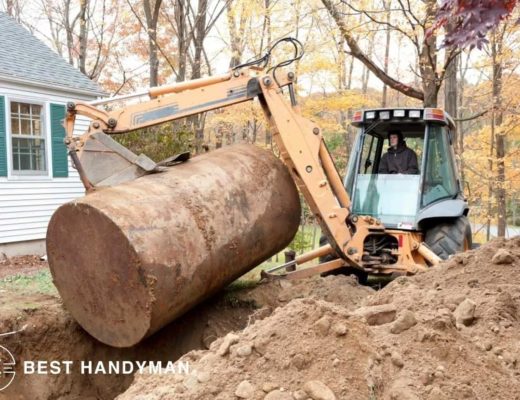Ever find yourself staring at that stubborn tree stump in your yard and wondering how much it’s gonna cost to get rid of that thing? Stump grinding is an essential step in reclaiming your outdoor space after tree removal.
Stump grinding costs around $150 to $500, with small stumps on the lower end of the range and hardwoods or twisted trunks on the higher end.
For a better estimate of the expenses involved in stump grinding, let’s take a look at the factors that affect the cost and the potential additional charges that may come with it.
Factors That Affect the Cost of Stump Grinding
Size
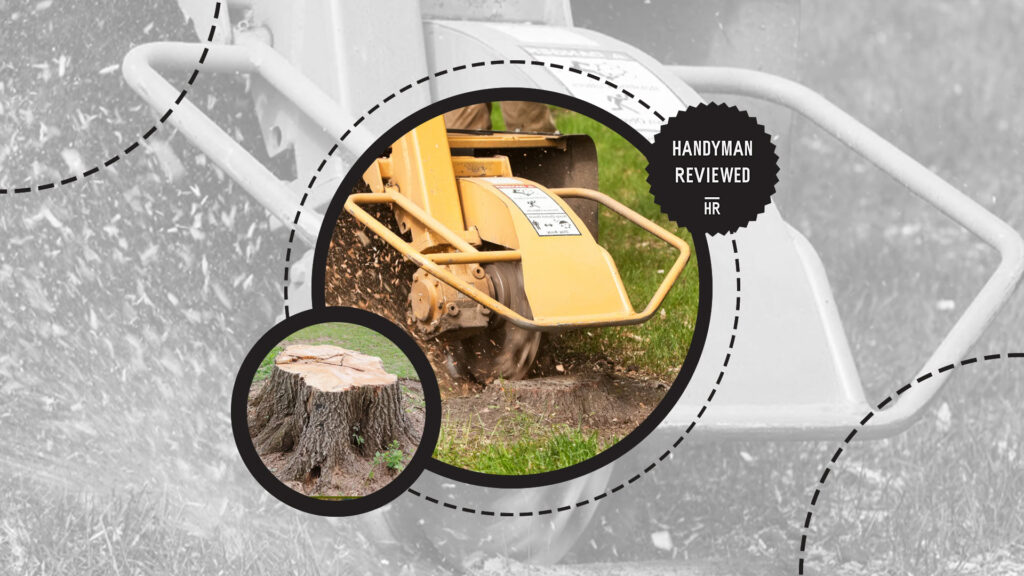
Contractors typically measure stump size based on the circumference of the tree trunk and prices commonly range between $2 and $5 per diameter inch.
It’s worth noting that even for smaller stumps, a minimum fee, which is often around $100 is typically charged by contractors for their grinding services.
Larger stumps, especially those with complex root systems, are more complicated to deal with and need more time and specialized equipment, which adds to the overall cost.
Type of Stump
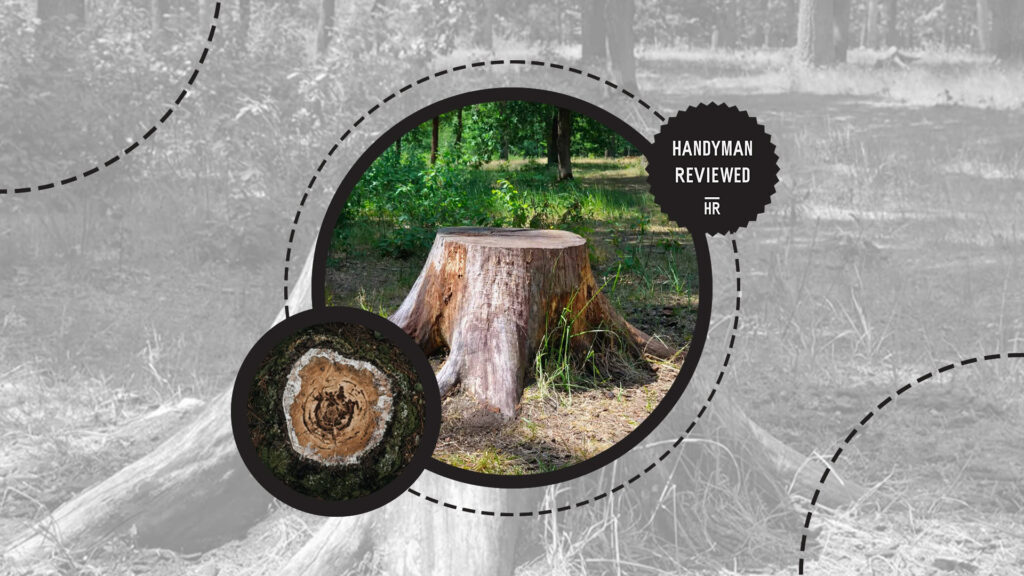
The specific tree species can significantly influence the level of difficulty in removing a stump and therefore affect the professional grinding costs.
Tree varieties such as pine, conifer, palm, cedar, and cypress are softer woods and are generally easier to grind down.
On the other hand, denser woods like oak, maple, birch, and cherry trees pose a more challenging removal process, demanding more time and physical effort. Stumps from these tougher tree types may result in grinding costs that are up to 20% higher.
Quantity
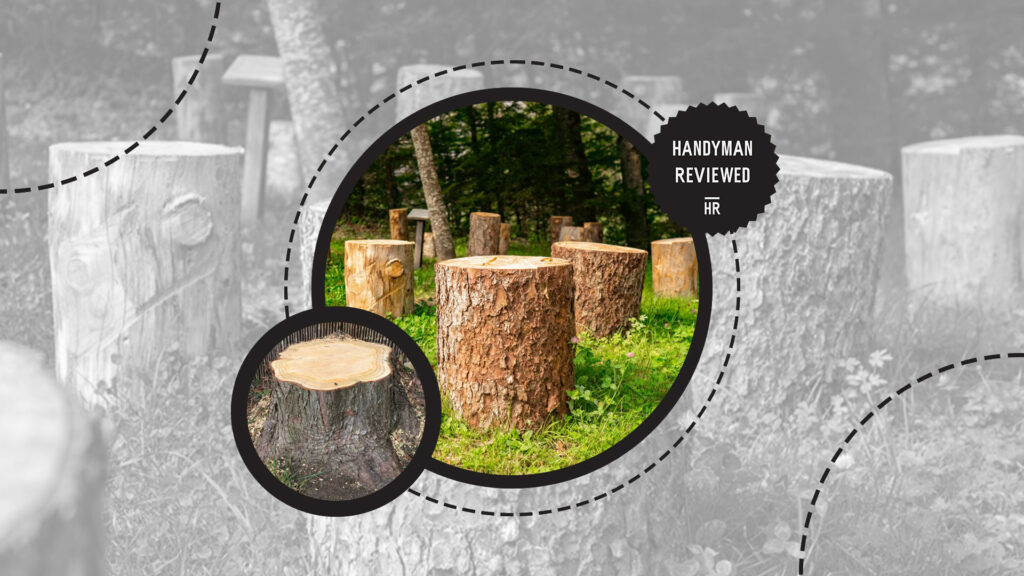
While dealing with multiple stumps might increase the total project expense, the cost per individual stump significantly decreases.
Contractors typically establish a minimum fee of $100 to $150 for single stump removal, but additional stumps can be more affordably priced at around $40 to $75 each.
As the number of stumps to be removed increases, the cost per stump decreases.
This creates more room for negotiation and potential savings, especially when dealing with a larger quantity of stumps.
Age of the Stump
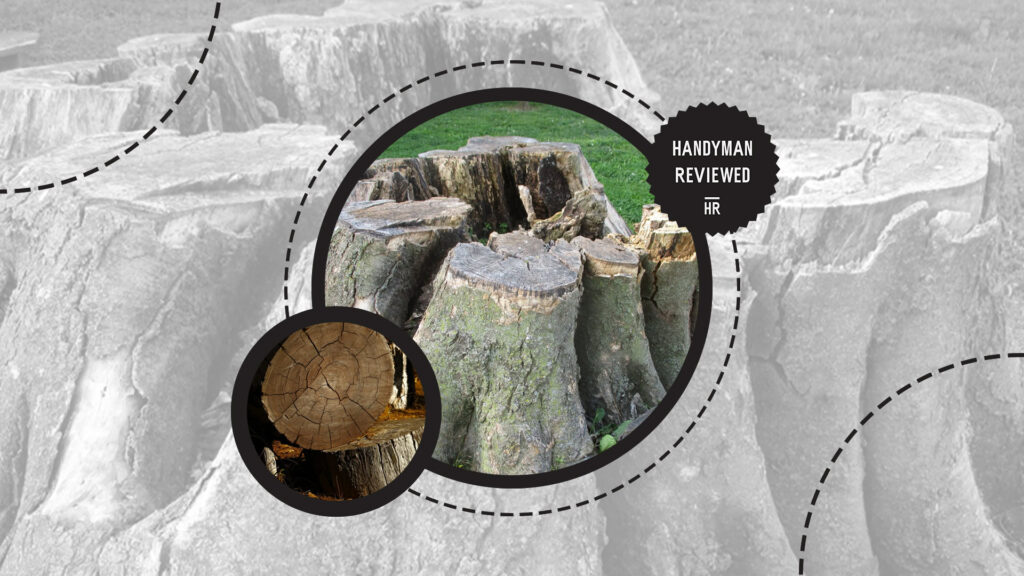
Older and rotten stumps are generally easier to remove through grinding which results in lower labor costs.
Diseased stumps, with issues such as rot and blight, pose a risk of spreading diseases to other trees, so swift removal is crucial in such cases to prevent the spread of diseases.
Even a healthy new stump should be removed right away, especially for common tree species, as they often send out new shoots if the trunk and roots are not completely eradicated.
Accessibility and Terrain
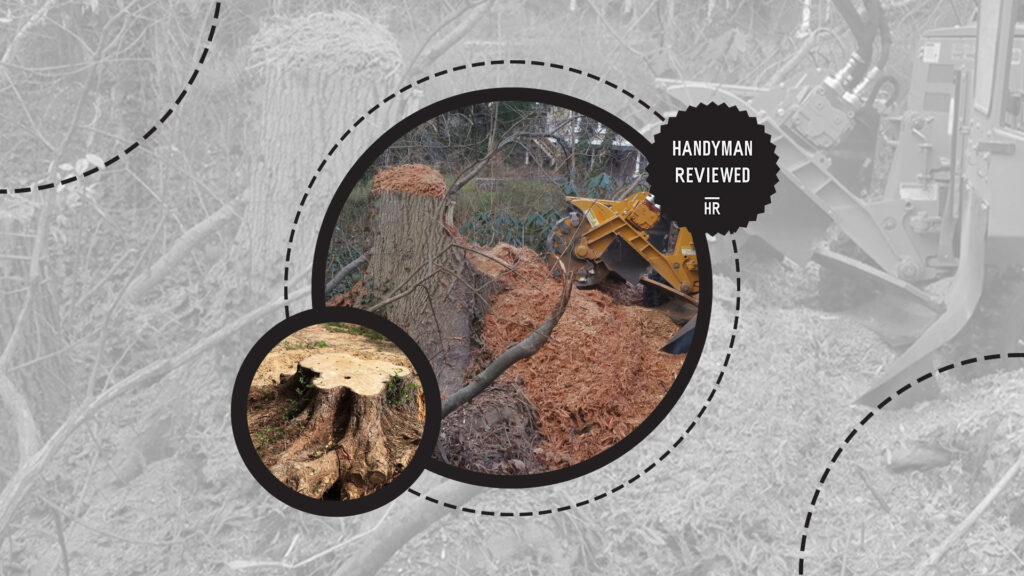
Working on difficult terrain incurs additional costs due to the extra time and effort required. Grinding a stump on flat, grassy terrain is notably easier compared to dealing with stumps situated in rocky, uneven, or hilly landscapes.
Some professionals charge an extra $50 per hour for the added labor, while others implement a flat fee which often reaches up to $200.
Debris Removal
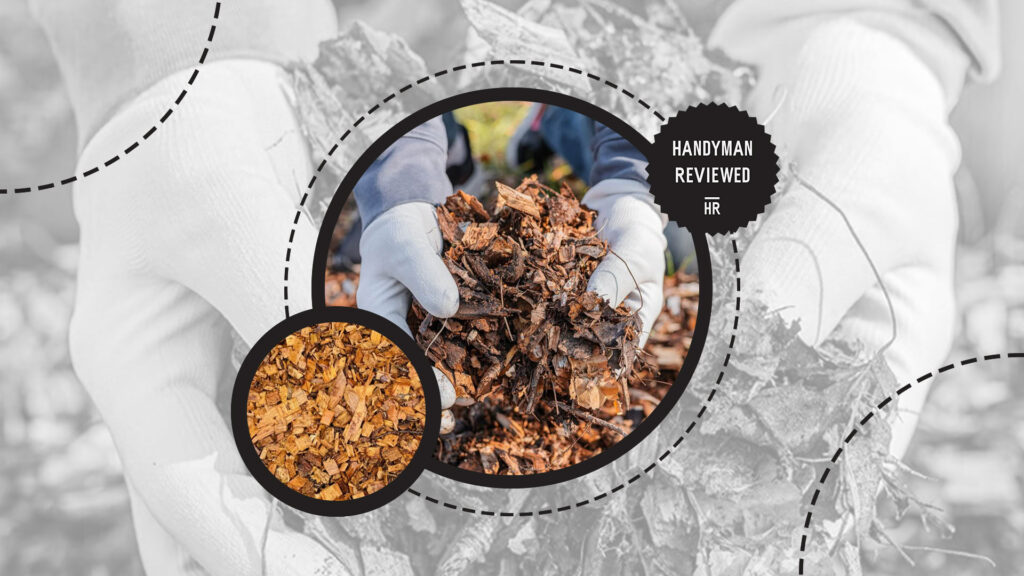
Debris removal may be included in the labor cost or presented as a separate flat fee typically ranging from $50 to $200.
Contractors may offer this service at an hourly rate of around $50 or a flat fee based on the stump’s diameter that’s usually $2 to $4 per inch.
Grinding Depth
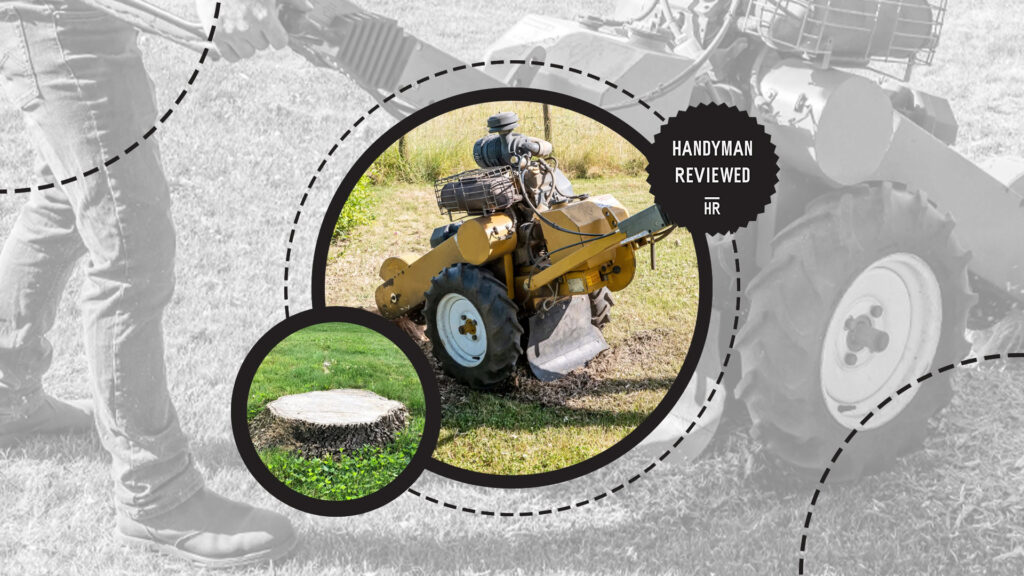
Standard services typically grind down 4” to 6” below ground level. Opting for complete grinding, which reaches up to 18”, deep is more labor-intensive and thus results in higher costs.
The choice of grinding depth impacts the complexity of the job and therefore affects the overall expense.
While standard grinding is more common and cost-effective, deeper grinding for complete stump removal incurs additional costs due to increased effort, time, and specialized equipment required.
Permits
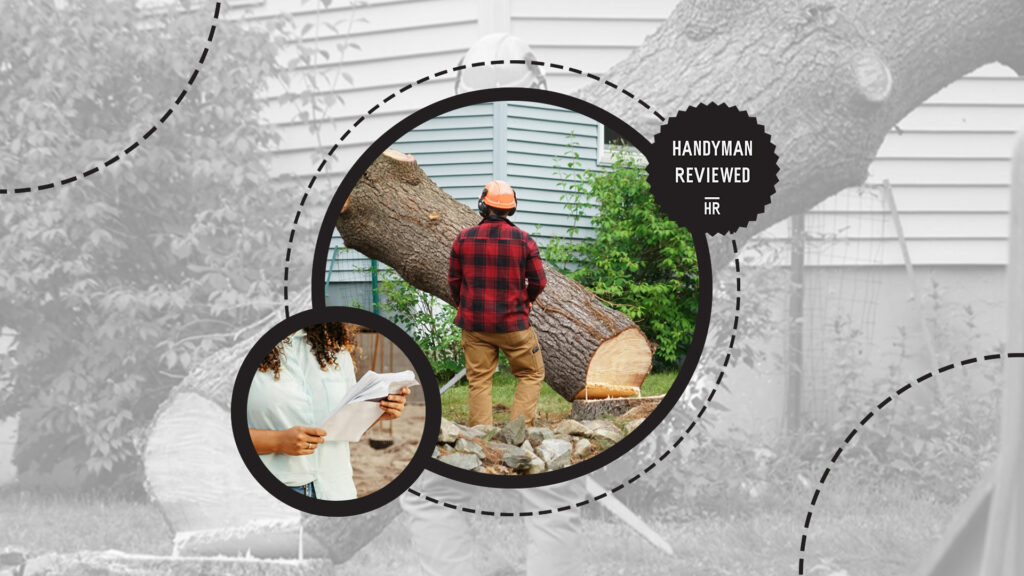
Securing permits is often necessary for stump removal due to potential utility lines beneath or to protect certain tree species. Permit costs typically range from $100 to $500, depending on city regulations.
Time of the Year
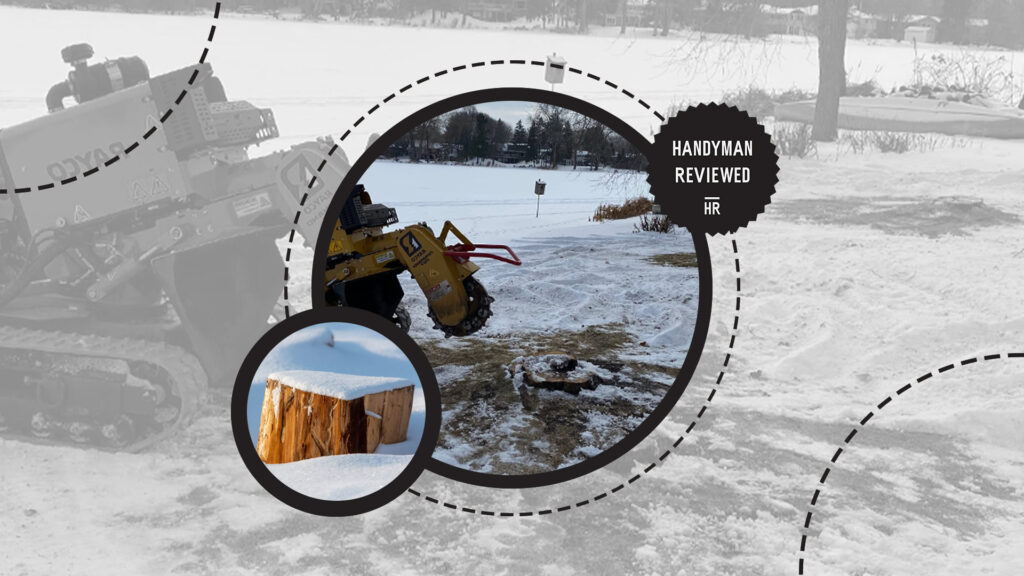
The time of year significantly influences stump grinding costs, with winter being the most economical period for tree removal, including stump grinding.
Taking advantage of the lower demand for tree services during the colder months can lead to savings of up to 20%.
Additional Costs That May Be Incurred
Root Removal
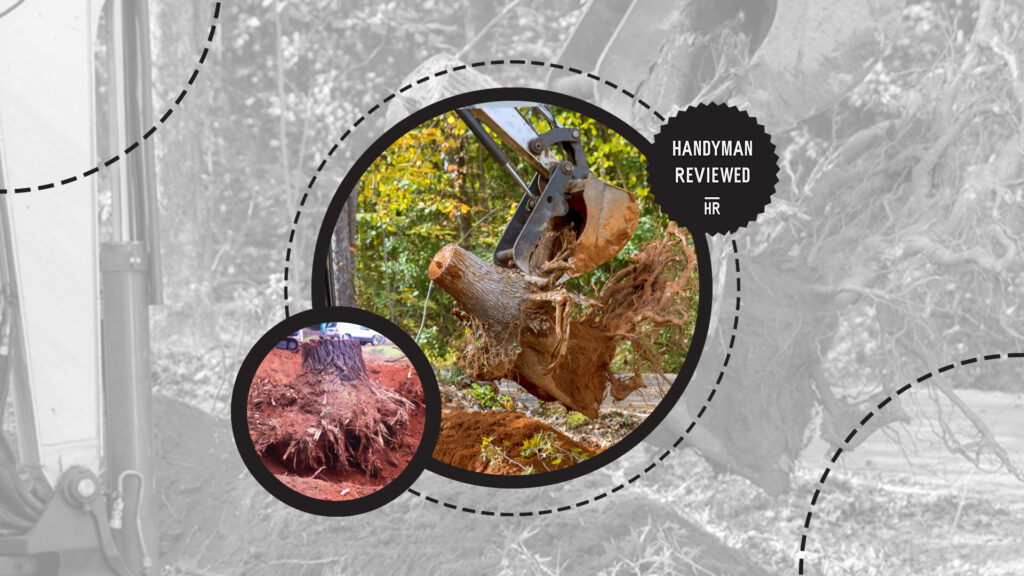
Stump grinding is effective for eliminating the visible stump above ground but does not address the complete removal of underground roots. To fully clear the area for replanting or construction, root removal is necessary.
It involves digging up and cutting all underground roots to ensure a clean slate for future use. Expect to pay between $100 and $200 per hour for the combined service of removing the roots and grinding away the stump.
While not mandatory, root removal becomes essential if you have ambitious plans for the area, such as transforming it into a vegetable garden or constructing a building.
The presence of an extensive root network beneath the surface can make it challenging for future digging and may hinder the growth of plants.
Also, untreated roots may decay over time and create voids in the soil that can compromise the stability of structures built over the area.
Tree Trimming
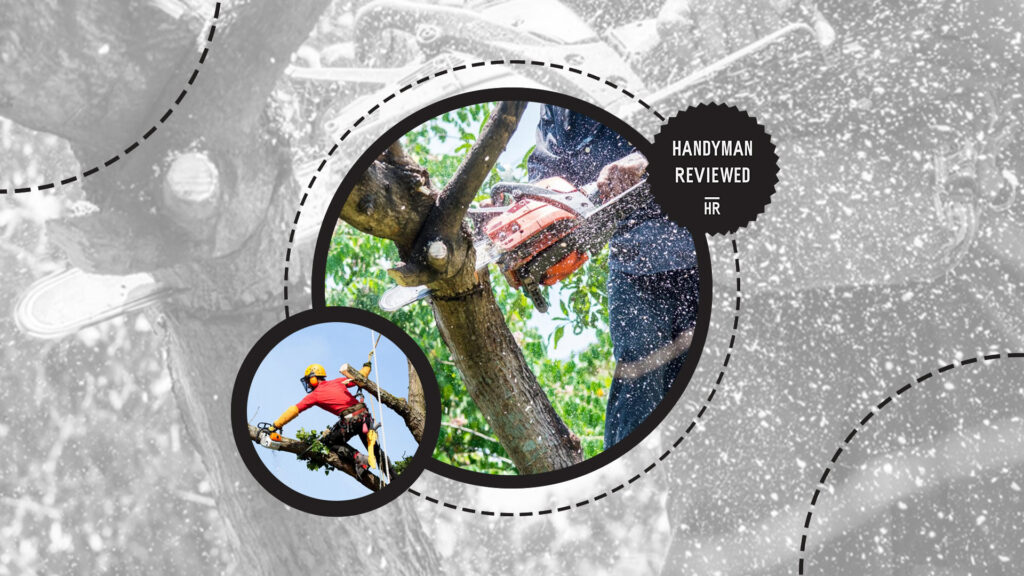
Tree trimming enhances property aesthetics and addresses safety concerns, reducing the risk of branches or trees falling on the house. Tree trimming costs for homeowners range from $75 to $1,800 depending on the size of the tree.
Combining this type of service with stump grinding can result in cost savings on overall tree service expenses which makes it a practical addition to stump grinding for homeowners seeking both cost optimization and property improvement.
Tree Removal
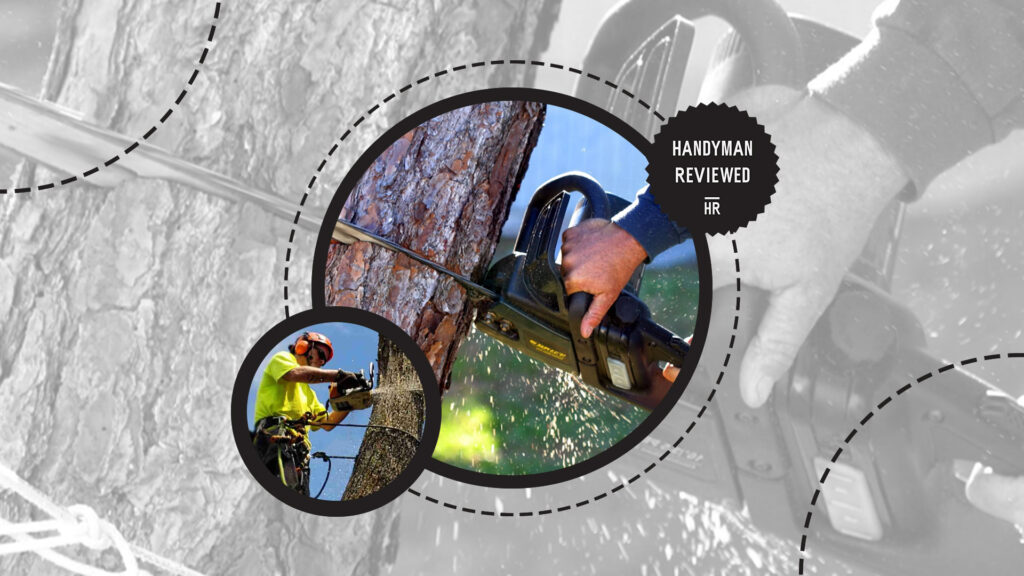
Tree removal costs range from $200 to $2,000 per tree, depending on the tree type, height, and location. This price covers felling, cutting into pieces, and hauling.
The cost typically excludes stump grinding and root removal, but for smaller trees, uprooting can be done. Excavators and tractors are recommended, especially for larger trees, as they can simultaneously push over the tree and its roots.
Tree Transplanting
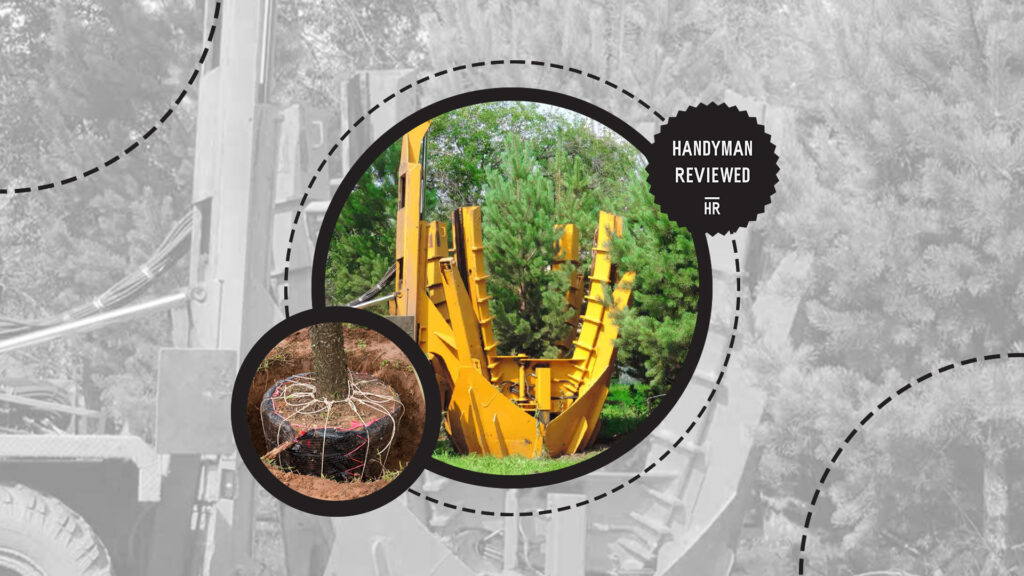
Tree transplanting is a common and cost-effective strategy for refreshing landscaping without investing in an entirely new tree. It typically costs around $800, with larger trees potentially reaching $1,500 when transplanted within the same yard.
This process is also often considered by homeowners during stump removal just to fill the space occupied by the stump.
Yard Repair
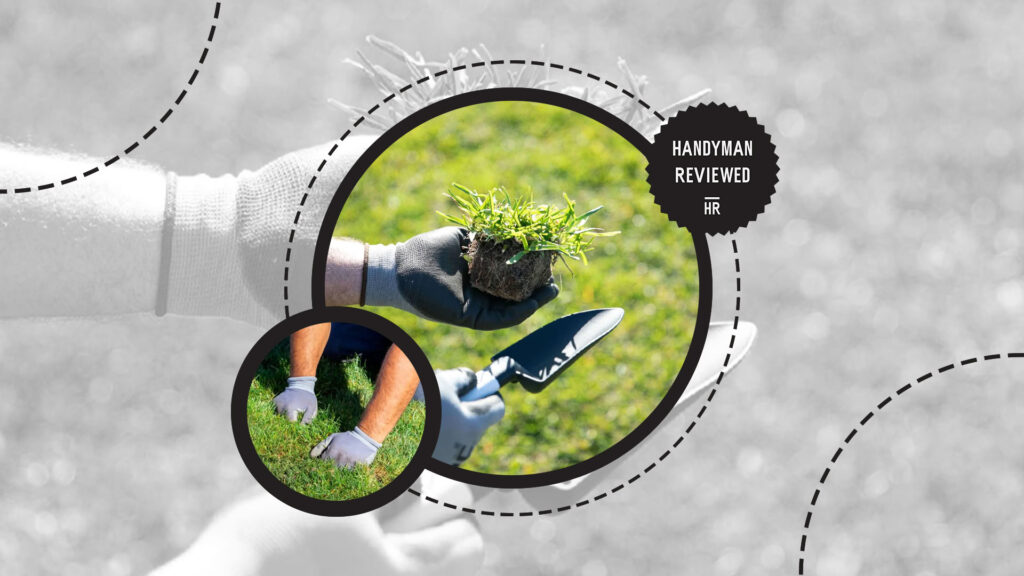
The cost of yard repairs following stump removal depends on factors like stump size and quantity. To address holes left by removed stumps affordably, mulching at $0.35 per square foot is an effective solution.
This not only prevents trip hazards but enriches the soil for future planting.
For an instantly-green lawn area without planting, laying sod (either directly over mulch or with rich topsoil) at $1 to $2 per square foot is an option. Homeowners may also consider sodding the entire yard simultaneously for maximum savings.
How much does DIY stump grinding cost?
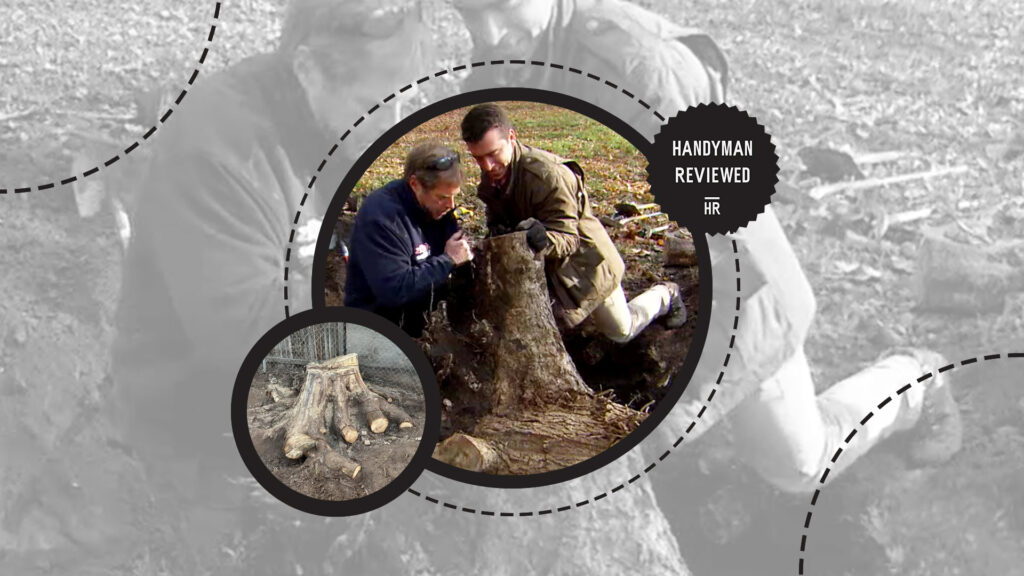
If you go for a DIY approach to stump grinding, the main expense is renting equipment, specifically a stump grinder. You won’t have to pay for labor, so the DIY cost, considering the equipment rental fee, is around $190 to $270 per day.
However, it’s essential to consider whether DIY stump grinding truly translates to cost savings, as equipment rental costs can be comparable to hiring a professional. Also, stump grinding can be very risky.
If the tree stump is situated near utility lines or close to your home, it’s safer to let a professional handle it. Professionals are well-versed in local codes and regulations, ensuring a smooth and legally compliant stump removal process.
Hiring a local expert not only mitigates risks but also provides peace of mind regarding the legality of the entire stump grinding process.
Cost-Saving Tips
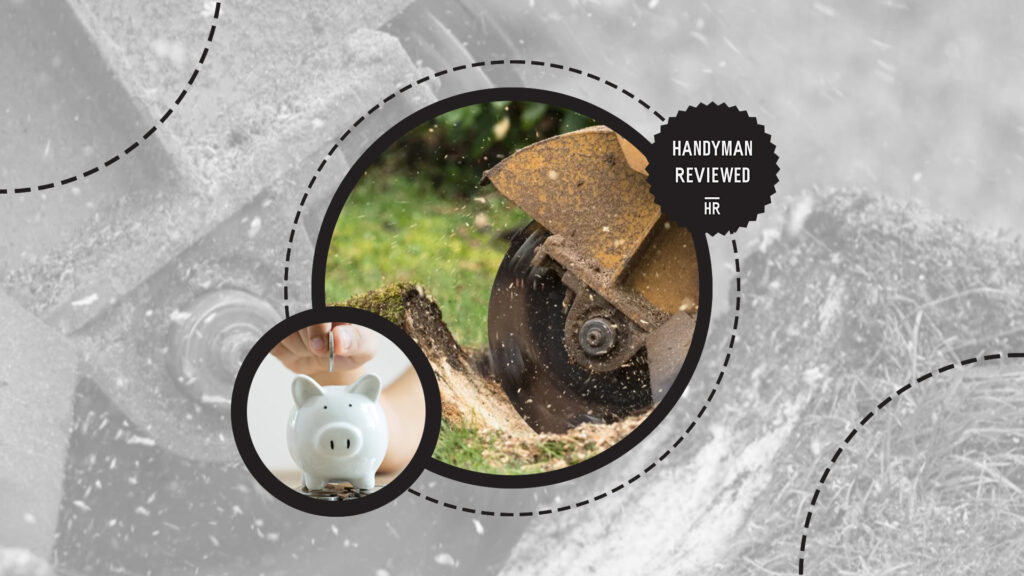
Here are some simple tips to save money on stump grinding costs:
- Bundle services: Consider bundling stump grinding with other tree-related services, such as tree trimming or removal. Many tree service providers offer package deals that can result in overall cost savings.
- Compare quotes: Ask for quotes from multiple stump grinding professionals in your area. Compare their pricing, services, and customer reviews to make an informed decision on the best value for your specific needs.
- Schedule during an off-peak season: Schedule stump grinding during the off-peak season, typically in the winter, when demand for tree services is lower. Some contractors may offer discounted rates during this time.
- Get multiple stumps ground in one session: If you have multiple stumps to be ground, consider having them done in a single session. Contractors may offer a reduced rate when handling multiple stumps in one visit.
- Ensure easy access to the stump removal site: Clear away obstacles and provide a straightforward path for the equipment of your contractor.
Doing this can save time and labor costs.
- Ask about minimum fees: Some contractors have minimum fees for stump grinding services. Inquire about these upfront and see if there’s an opportunity to combine smaller jobs to meet the minimum threshold.
- Consider partial removal: If complete stump removal is not necessary, discuss options for partial removal or grinding to a shallower depth. This way, you can reduce costs while still addressing your specific needs.
- Do the cleanup: Consider taking on the cleanup process by collecting wood chips and other debris in bags or containers.
Dispose of them following local guidelines to avoid additional cleanup expenses for a cost-effective solution after stump grinding.



